Discover Korea's World Heritage
Historic Villages of Korea: Hahoe and Yangdong
Korea’s Representative Clan Villages: Hahoe and Yangdong
There are different types of historic villages in Korea, including clan villages and town fortresses. A clan village, where people sharing the same last name live together, began to form in the early Joseon period and accounted for about 80 percent of all villages in the late Joseon times.
A clan village refers to a village where a single clan or a small number of clans comprise the great majority of the total population or played a leading role in making decisions on important village affairs. Hahoe and Yangdong are Korea’s representative clan villages and yangban (nobility) villages.
Source: Cultural Heritage Administration
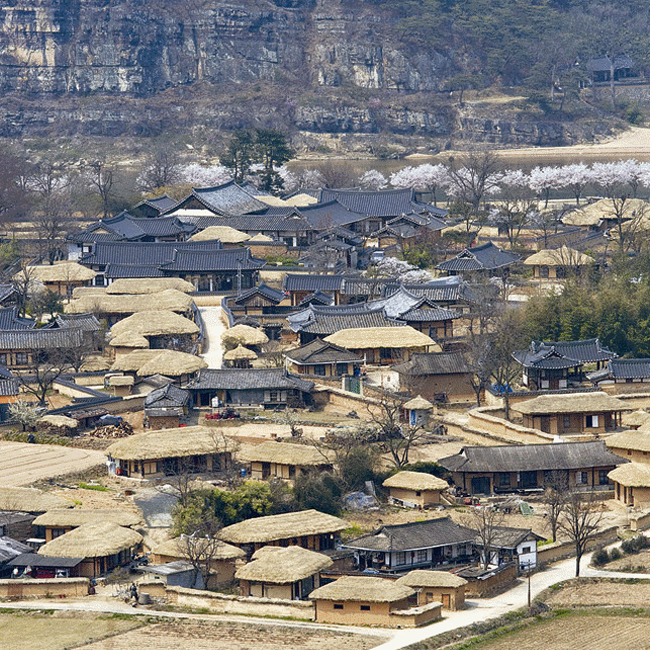
Hahoe Village in Andong
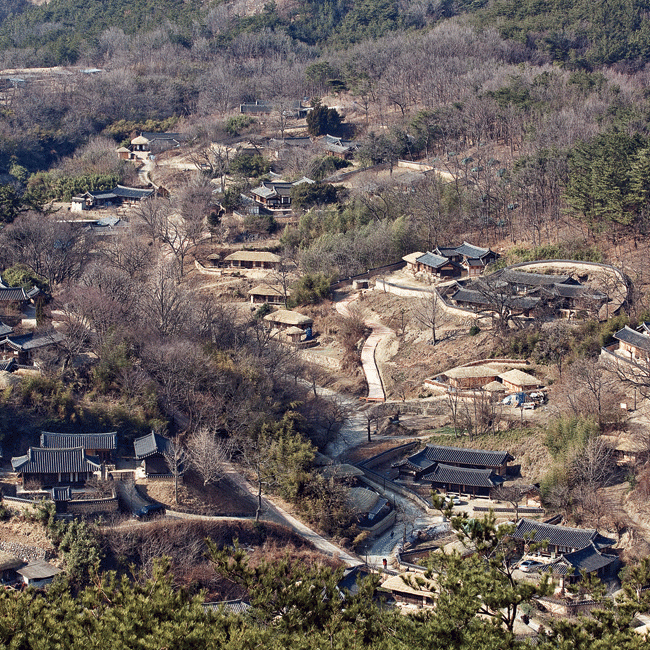
Yangdong Village in Gyeongju
-
Characteristics of Historic Villages
Hahoe and Yangdong are both ideally located, with a mountain in the back and a river in the front. Houses in the villages were designed to adjust to hot and humid summers as well as cold and dry winters, while the layout of the houses conforms to Confucian rules.
Times have changed, but the two villages still maintain the typical landscape of a clan community that includes the residence of jongga (head family of a clan), which is a key element to a yangban clan village, private houses, study halls, pavilions, seowon (Confucian academy for learning) and village schools surrounded by farmlands and the clean natural environment. The villages are also abundant in spiritual heritages such as old rituals, traditional games, ancient publications and works of art. -
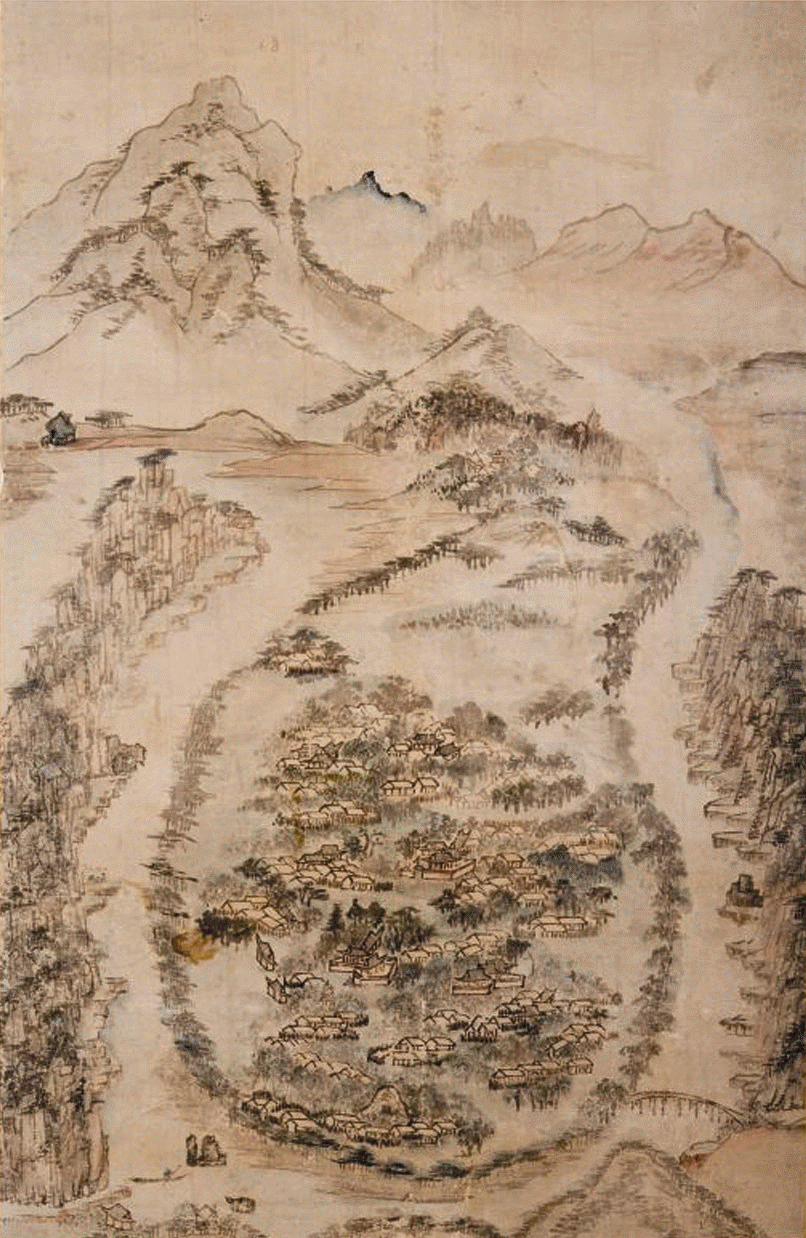
Painting of Hahoe Village
Source: Cultural Heritage Administration
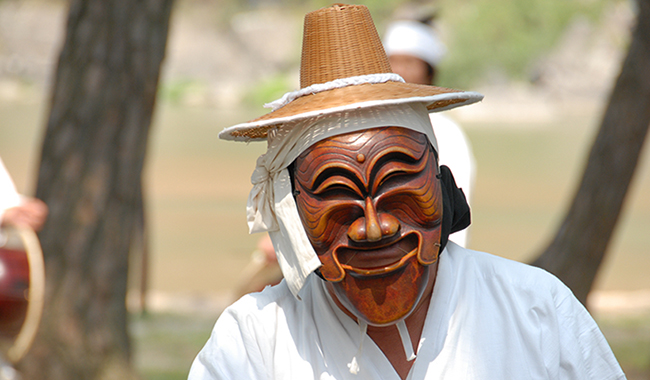
Byeolsingut (Shamanistic Ritual and Mask Dance)
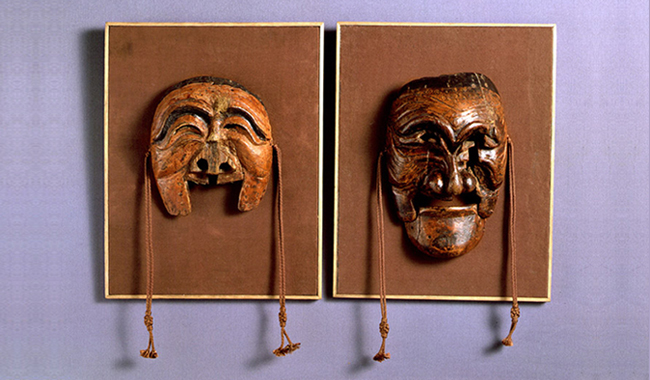
Hahoe Village in Andong
Nakdonggang River meanders through the village of Hahoe, meaning “at a river’s bend.” Surrounded by low hills, the village is situated in a beautiful site, with the river coiling around it. Hahoe Village was formed in the late Goryeo period when three clans with last names of Heo, Ahn and Ryu came to find a new settlement. It became a village exclusively for the Ryu clan in the late 17th century. At present, some 100 households live in the village.
Source: Cultural Heritage Administration
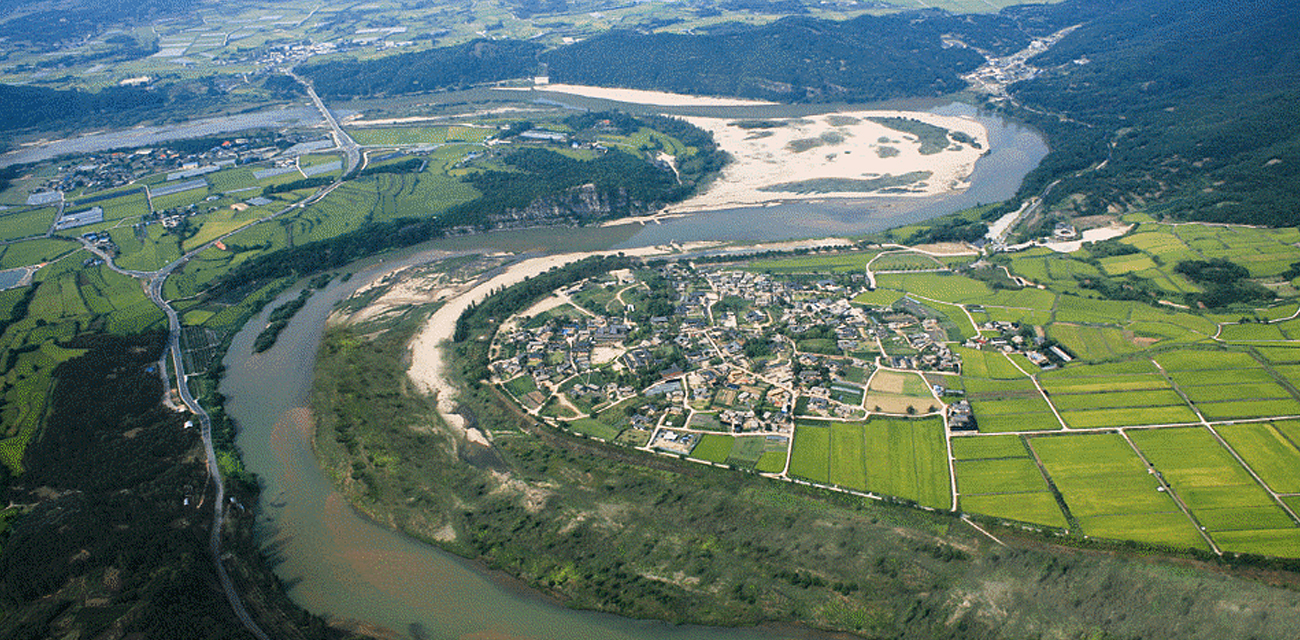
Yangjindang House, the symbol of the Ryu clan
Chunghyodang House, home of the head family of Ryu Seong-ryong, a prominent scholar from Hahoe Village
Byeongsan Seowon, Hwacheon Seowon, places of learning
Thatched-roof House, the humble residence of commoners
Source: Cultural Heritage Administration
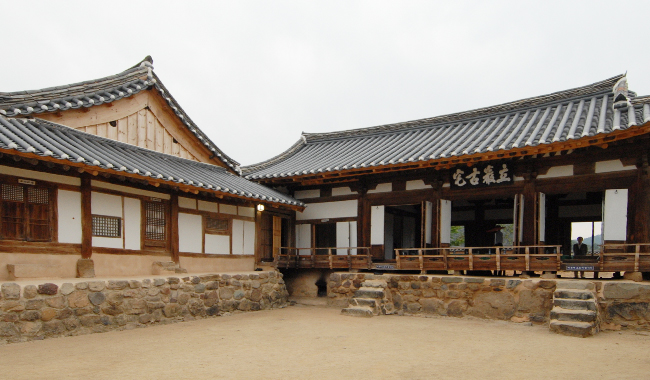
Yangjindang House
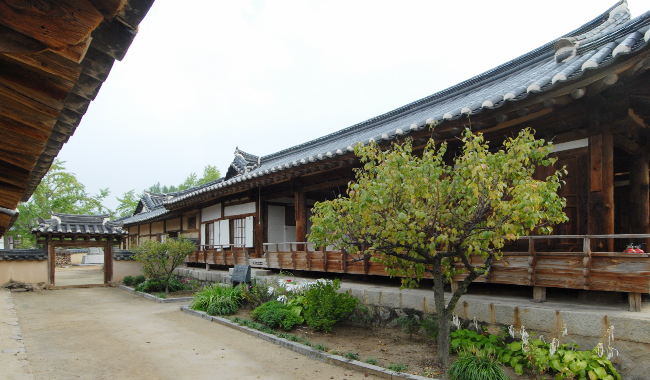
Chunghyodang House
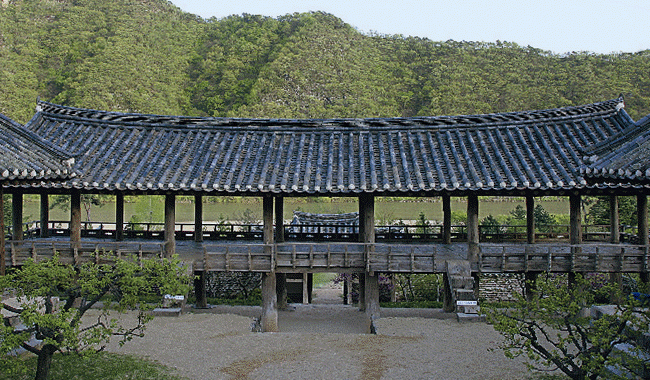
Byeongsan Seowon
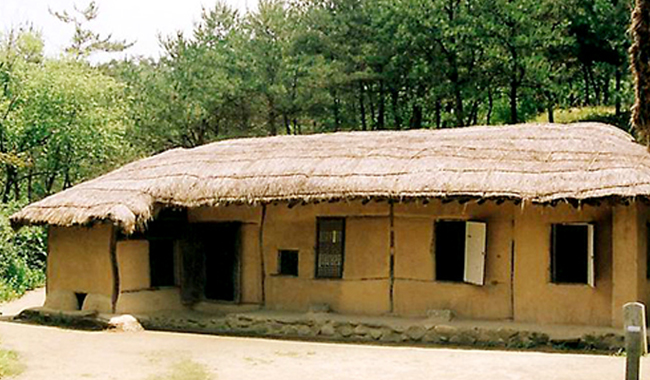
Thatched-roof House
Yangdong Village
Yangdong Village was created in the early Joseon period when two clans—the Lee clan and the Son clan—became related by marriage. A man from the Son clan moved to his wife’s family and the descendants settled down in Yangdong.
It is a typical yangban (nobility) village that was built along the hillsides and valleys. Yangban residences with tile roof houses are found up in the valleys, as the location helps residents stay cool in summer and warm in winter. Thatched-roof houses that belonged to commoners are clustered below them. The landscape in the village was rearranged in line with Joseon’s hierarchical social order set by different classes.
Source: Cultural Heritage Administration
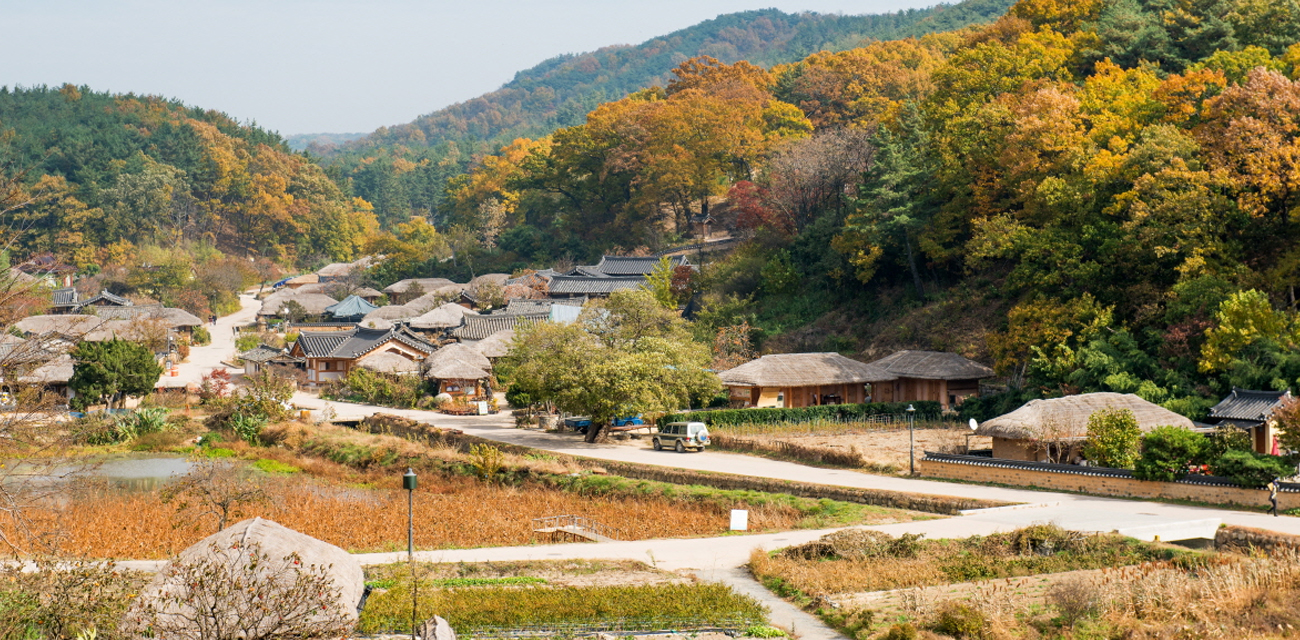
Seobaekdang House, the residence of the head family of the Son clan
Mucheomdang House, the residence of the head family of Yeoju Lee clan
Hyangdan, a mansion that looks highly distinctive
Donggang Seowon, Oksan Seowon, Dokrakdang House, Confucian academies
Source: Cultural Heritage Administration
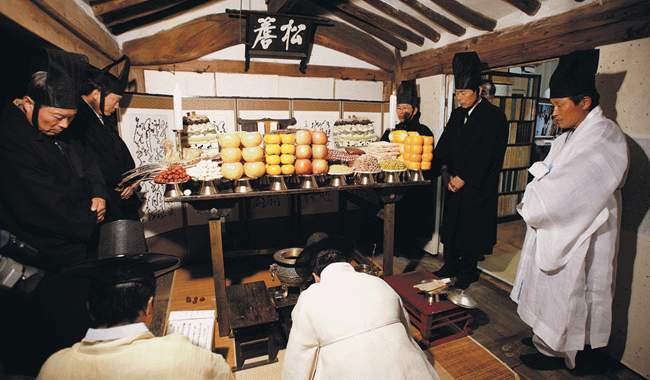
Seobaekdang House
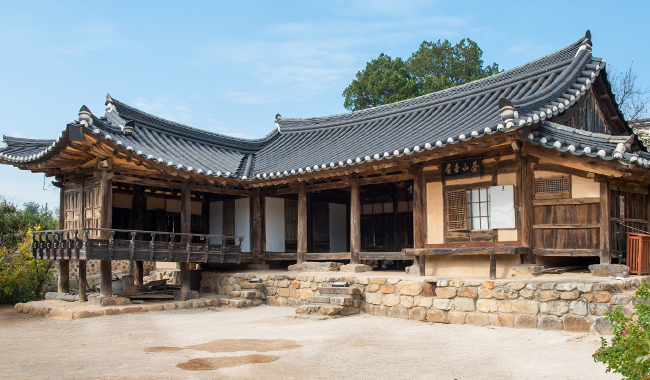
Mucheomdang House
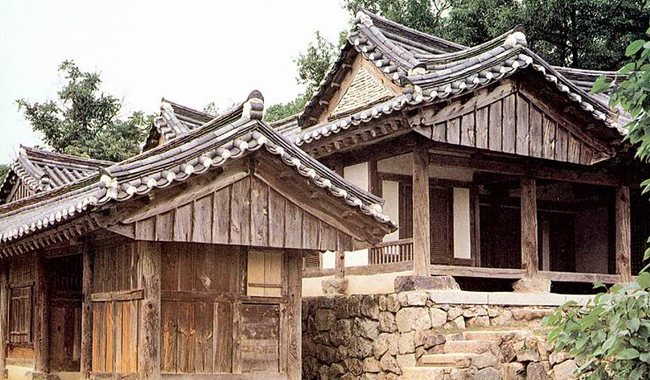
Hyangdan
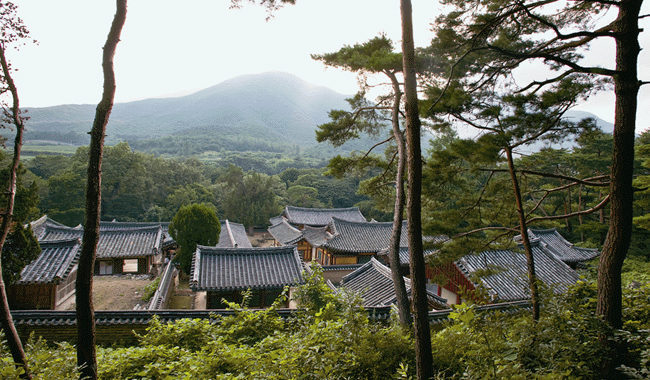
Oksan Seowon

